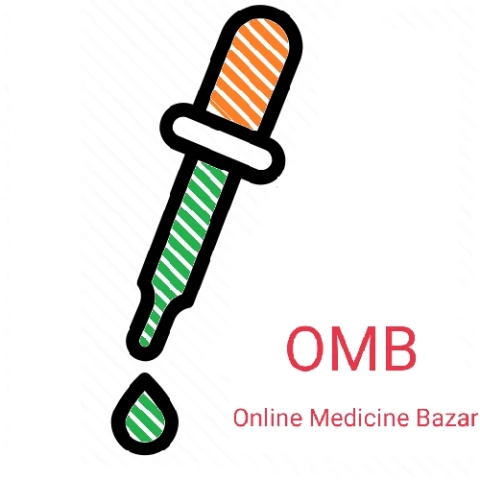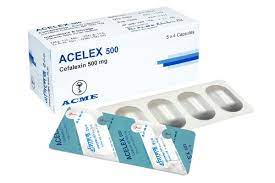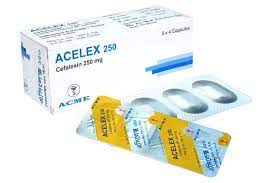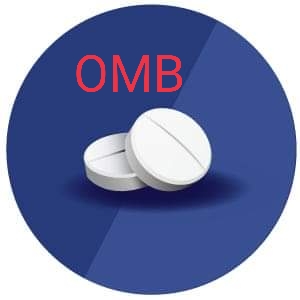
Acelex Paediatric Drops-15 ml
৳ 43
Order By Call Or WhatsApp :
+88 01886-646186
125 mg/1.2 ml
About the Product
Full Description
Introduction
Acelex is an antibiotic medicine used to treat bacterial infections in your body. It is effective in infections of the lungs, ears, throat, urinary tract, skin, soft tissues, bones, and joints. It kills bacteria, which helps to improve your symptoms and cure the infection. Acelex may be taken with or without food. You should take it regularly at evenly spaced intervals as per the schedule prescribed by your doctor. Taking it at the same time every day will help you to remember to take it. The dose will depend on what you are being treated for, but you should always complete a full course of this antibiotic as prescribed by your doctor. Do not stop taking it until you have finished, even when you feel better. If you stop taking it early, some bacteria may survive and the infection may come back. It will not work for viral infections such as flu or the common cold. Using any antibiotic when you do not need it can make it less effective for future infections. The most common side effects of this medicine include rash, stomach pain, nausea, vomiting, indigestion, and diarrhea. These are usually mild but let your doctor know if they bother you or last more than a few days. Before using it, you should tell your doctor if you are allergic to any antibiotics or have any kidney or liver problems. You should also let your doctor know all other medicines you are taking as they may affect, or be affected by this medicine. Pregnant and breastfeeding mothers should consult their doctor before using it.
Uses of CEPHALEXIN(ZYD) Tablet
- Bacterial infections
Side effects of CEPHALEXIN(ZYD) Tablet
- Rash
- Allergic reaction
- Stomach pain
- Nausea
- Indigestion
- Diarrhea
How to use CEPHALEXIN(ZYD) Tablet
Take this medicine in the dose and duration as advised by your doctor. Swallow it as a whole. Do not chew, crush or break it. Acelex may be taken with or without food, but it is better to take it at a fixed time.
How CEPHALEXIN(ZYD) Tablet works
Acelex is an antibiotic. It kills bacteria by preventing them from forming the bacterial protective covering (cell wall) which is needed for them to survive.
What if you forget to take CEPHALEXIN(ZYD) Tablet?
If you miss a dose of Acelex, take it as soon as possible. However, if it is almost time for your next dose, skip the missed dose and go back to your regular schedule. Do not double the dose.
 Quick Tips
Quick Tips- Your doctor has prescribed CEPHALEXIN 250 MG TABLET to cure your infection and improve your symptoms.
- Take it with food to avoid an upset stomach.
- Do not skip any doses and finish the full course of treatment even if you feel better. Stopping it early may make the infection to come back and harder to treat.
- Discontinue CEPHALEXIN 250 MG TABLET and inform your doctor immediately if you get a rash, itchy skin, swelling of face and mouth, or have difficulty in breathing.
- Diarrhea may occur as a side effect but should stop when your course is complete. Inform your doctor if it doesn't stop or if you find blood in your stools.
- Avoid consuming alcohol while taking CEPHALEXIN 250 MG TABLET as it may cause increased side effects.
 Brief Description
Brief DescriptionIndication
Pneumonia, Otitis media, Bacterial endocarditis, Streptococcal pharyngitis, Cellulitis, Respiratory tract infections, Urinary tract infections, Bone and Joint Infections, Genitourinary tract infections, Acute prostatitis
Administration
May be taken with or without food. May be taken w/ meals to reduce GI discomfort.
Adult Dose
Oral Bone and joint infections; Respiratory tract infections, Genitourinary Tract Infections, Otitis Media Adults 1 to 4 g/day in divided doses. Usual dose is 250 mg every 6 hours. Streptococcal pharyngitis, skin and skin structure infections, uncomplicated cystitis, cellulitis and mastitis >15 years 500 mg every 12 hours.
Child Dose
Children 25 to 50 mg/kg/day q12h For streptococcal pharyngitis in patients >1year old and for skin and skin structure infections, divide total daily dose and give every 12 hours. In sever infections, 75–100 mg/kg/day for bone and joint, otitis media or severe infections q6–8h Beta-hemolytic streptococcal infections: Continue treatment for at least 10 days.
Renal Dose
Renal impairment: CrCl (ml/min) 40-50 Max: 3 g daily. 10-40 Max: 1.5 g daily. <10 Max: 750 mg daily.
Contraindication
Hypersensitivity to cephalosporins.
Mode of Action
Cefalexin binds to one or more of the penicillin-binding proteins (PBPs) which inhibits the final transpeptidation step of peptidoglycan synthesis in bacterial cell wall, thus inhibiting biosynthesis and arresting cell wall assembly resulting in bacterial cell death.
Precaution
Hypersensitivity to penicillins; pseudomembranous colitis; renal failure; pregnancy and lactation. Lactation: Drug excreted in breast milk; use with caution
Side Effect
GI disturbances (e.g. nausea, vomiting, diarrhoea, abdominal discomfort), dyspepsia; allergic reactions (e.g. rash urticaria, angioedema); genital and anal pruritus, genital candidiasis, vaginitis and vaginal discharge, dizziness, fatigue, headache, agitation, confusion, hallucinations, arthralgia, arthritis and joint disorders; eosinophilia, neutropenia, thrombocytopenia, haemolytic anaemia, slightly elevated AST and ALT. Rarely, erythema multiforme, Stevens-Johnson syndrome and toxic epidermal necrolysis; cholestatic jaundice, transient hepatitis. Potentially Fatal: Anaphylactic reactions; nephrotoxicity.
Pregnancy Category Note
Pregnancy There are no adequate and well-controlled studies Available data from published epidemiologic studies and pharmacovigilance case reports over several decades with cephalosporin use, use in pregnant women have not established drug-associated risks of major birth defects, miscarriage, or adverse maternal or fetal outcomes Animal data Animal reproduction studies with mice and rats using oral doses of cephalexin that are 0.6- and 1.2-times the maximum recommended human dose (MRHD) based on body surface area during organogenesis revealed no evidence of harm to the fetus; estimated background risk of major birth defects and miscarriage for indicated population is unknown Lactation Data from a published clinical lactation study reports that cephalexin is present in human milk; relative infant dose (RID) is considered to be <1% of maternal weight adjusted dose; there are no data on effects of cephalexin on breastfed child or on milk production Development of health benefits of breastfeeding should be considered along with mother’s clinical need for therapy and any potential adverse effects on breastfed child from therapy or from underlying maternal condition
Interaction
Concurrent use w/ metfromin may result to fatal lactic acidosis. May enhance the anticoagulant effect of vit K antagonists (e.g. warfarin). Increased risk of nephrotoxicity w/ potent diuretics (e.g. ethacrynic acid, furosemide) and other potentially nephrotoxic antibiotics (e.g. aminoglycosides, polymyxin, colistin). Prothrombin time may be prolonged when used concomitantly w/ oral anticoagulants. May reduce the effects of OCs. Hypokalaemia may result from concomitant use of cefalexin and cytotoxic drugs for leukaemia. Uricosuric drugs (e.g. probenecid) may suppress renal excretion, resulting to increased plasma levels of cefalexin. May diminish the therapeutic effect of Na picosulfate, BCG and typhoid vaccine. May reduce serum level w/ multivitamins/minerals.










